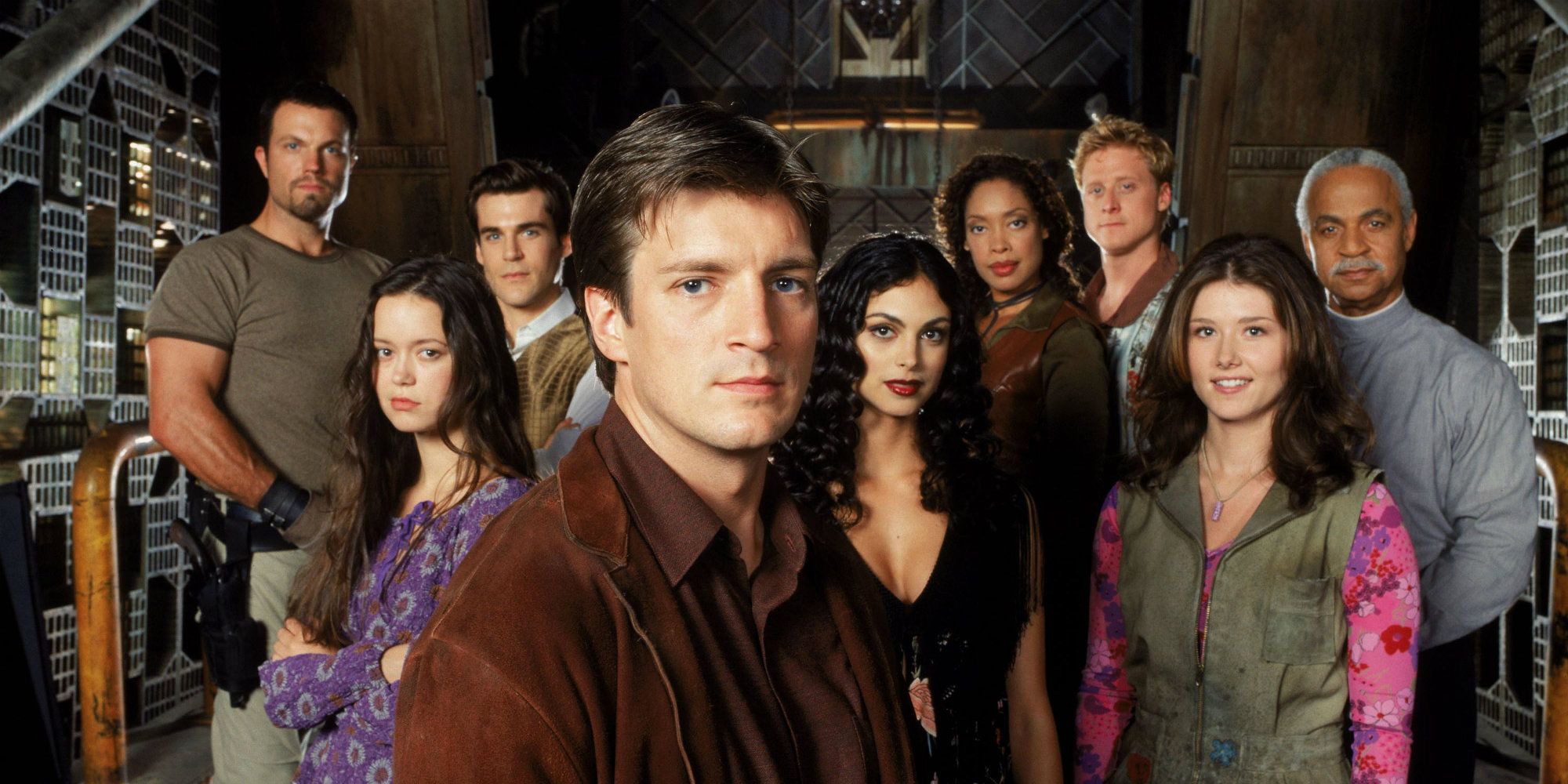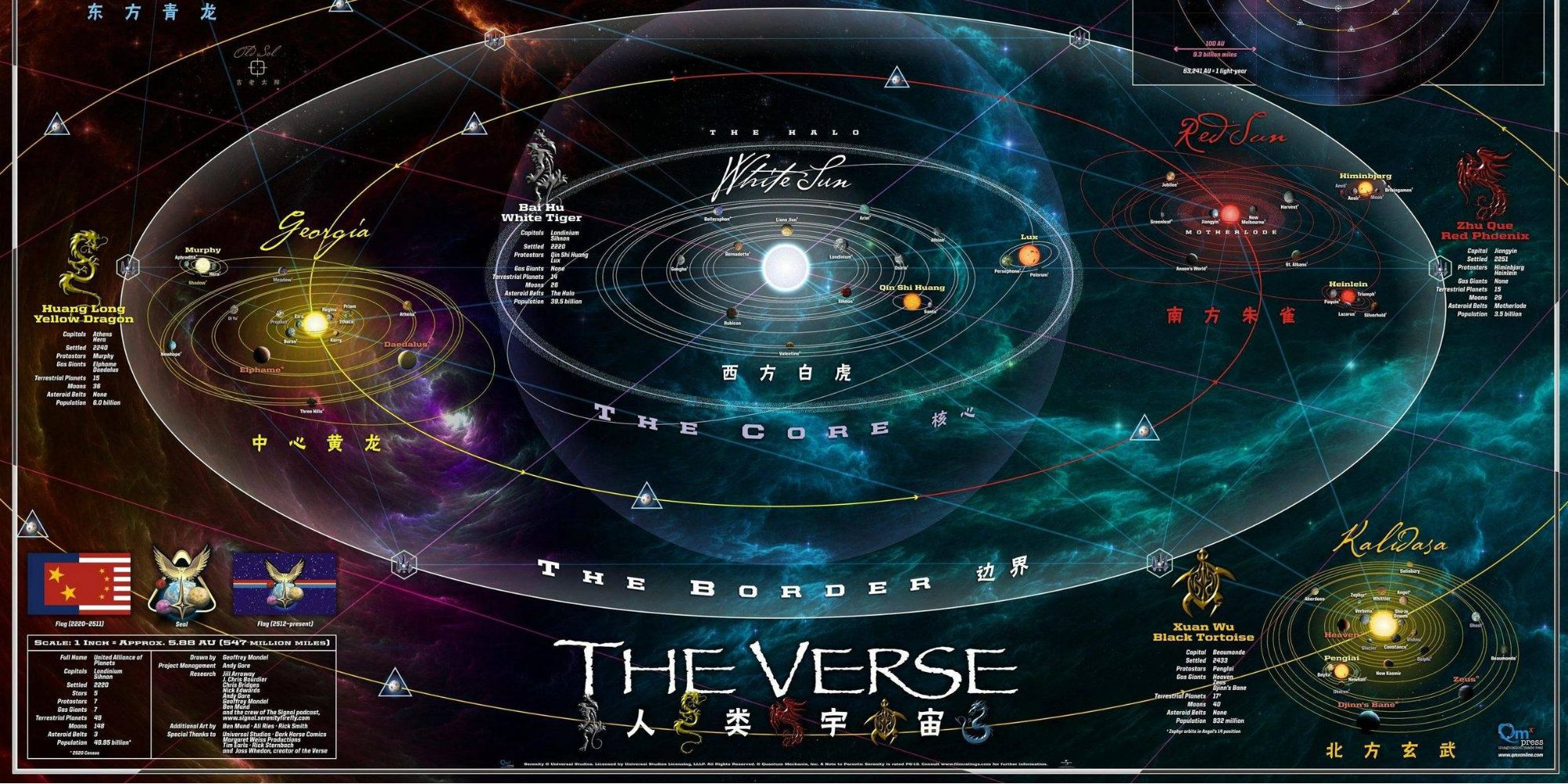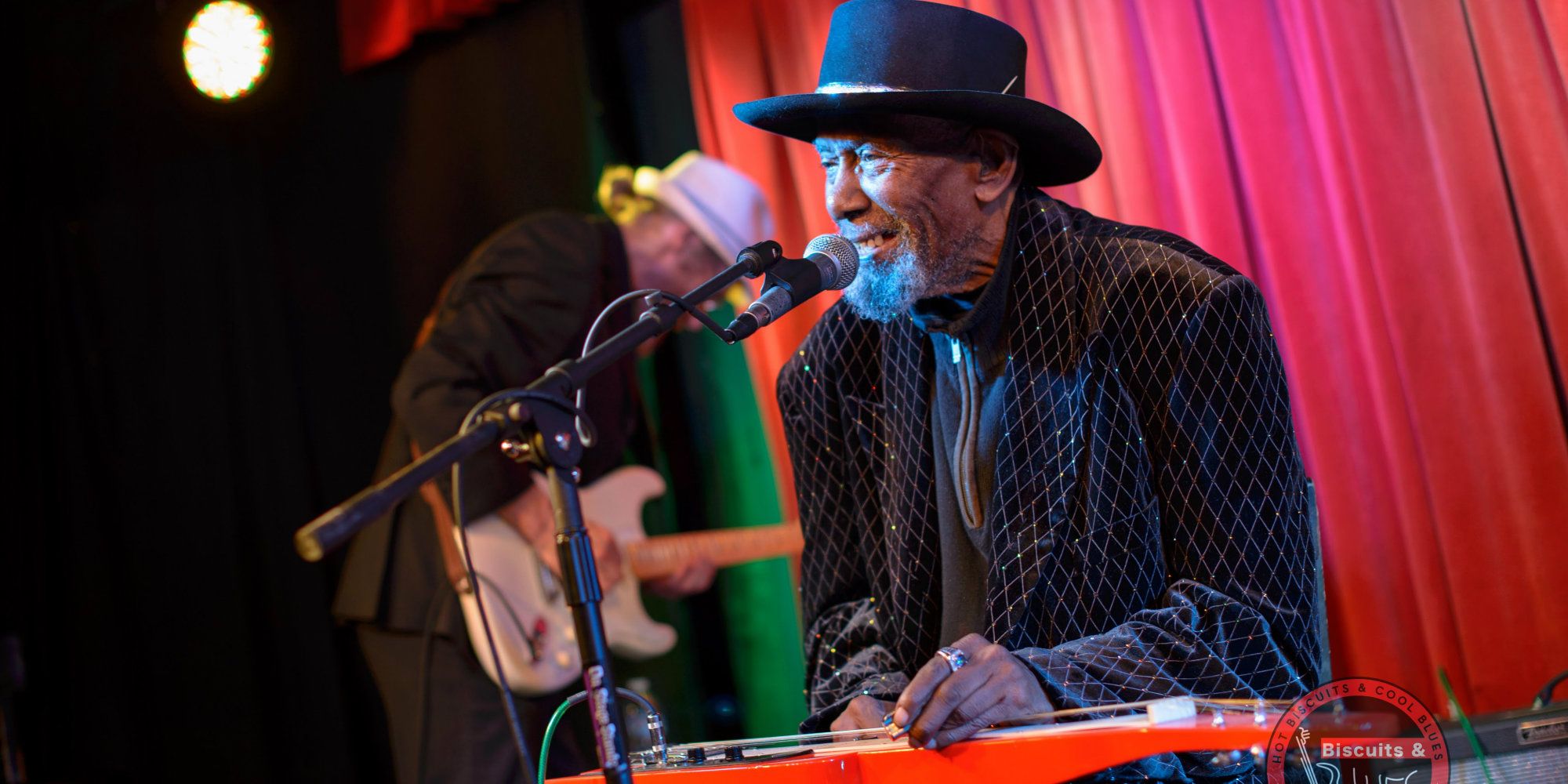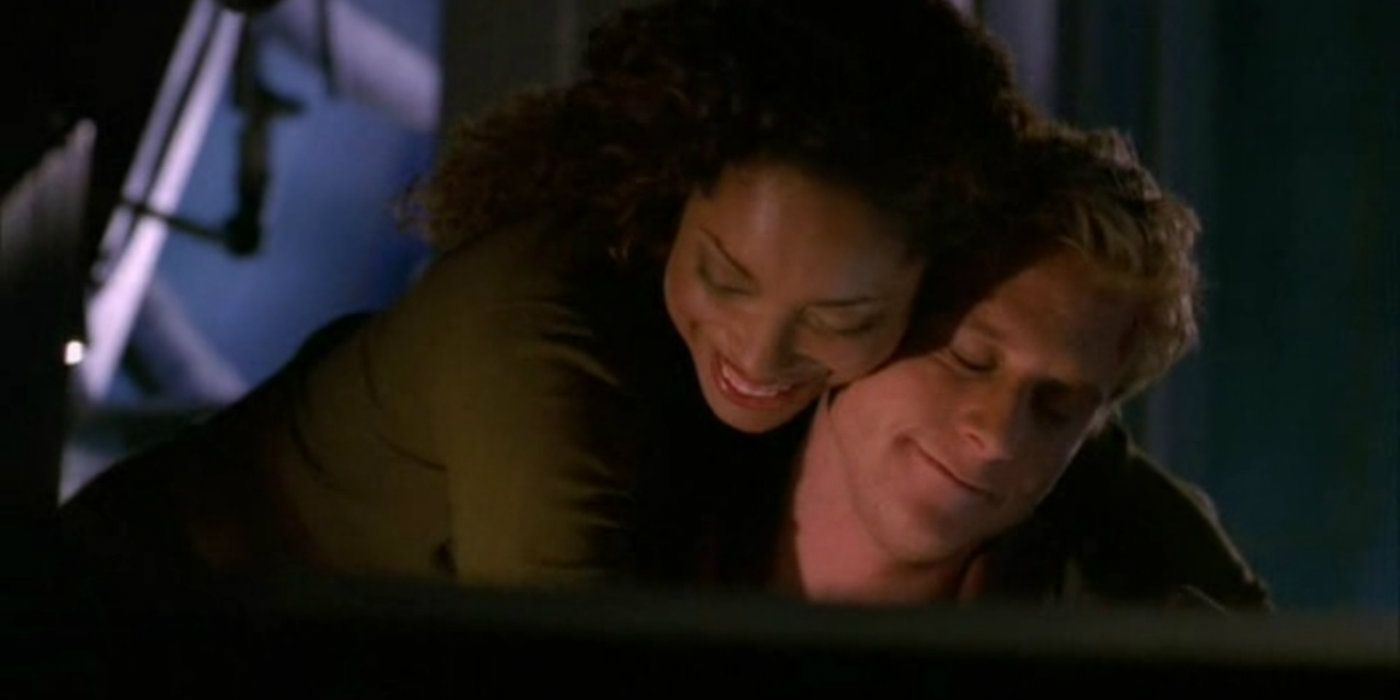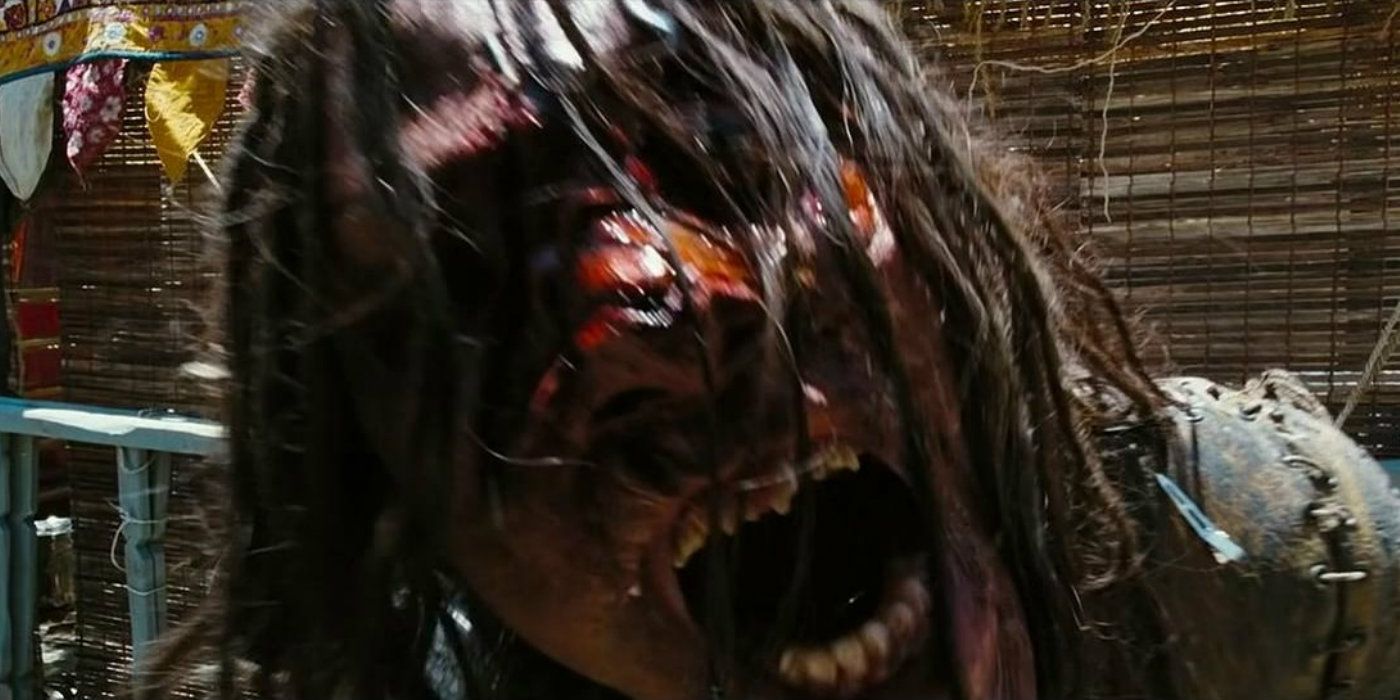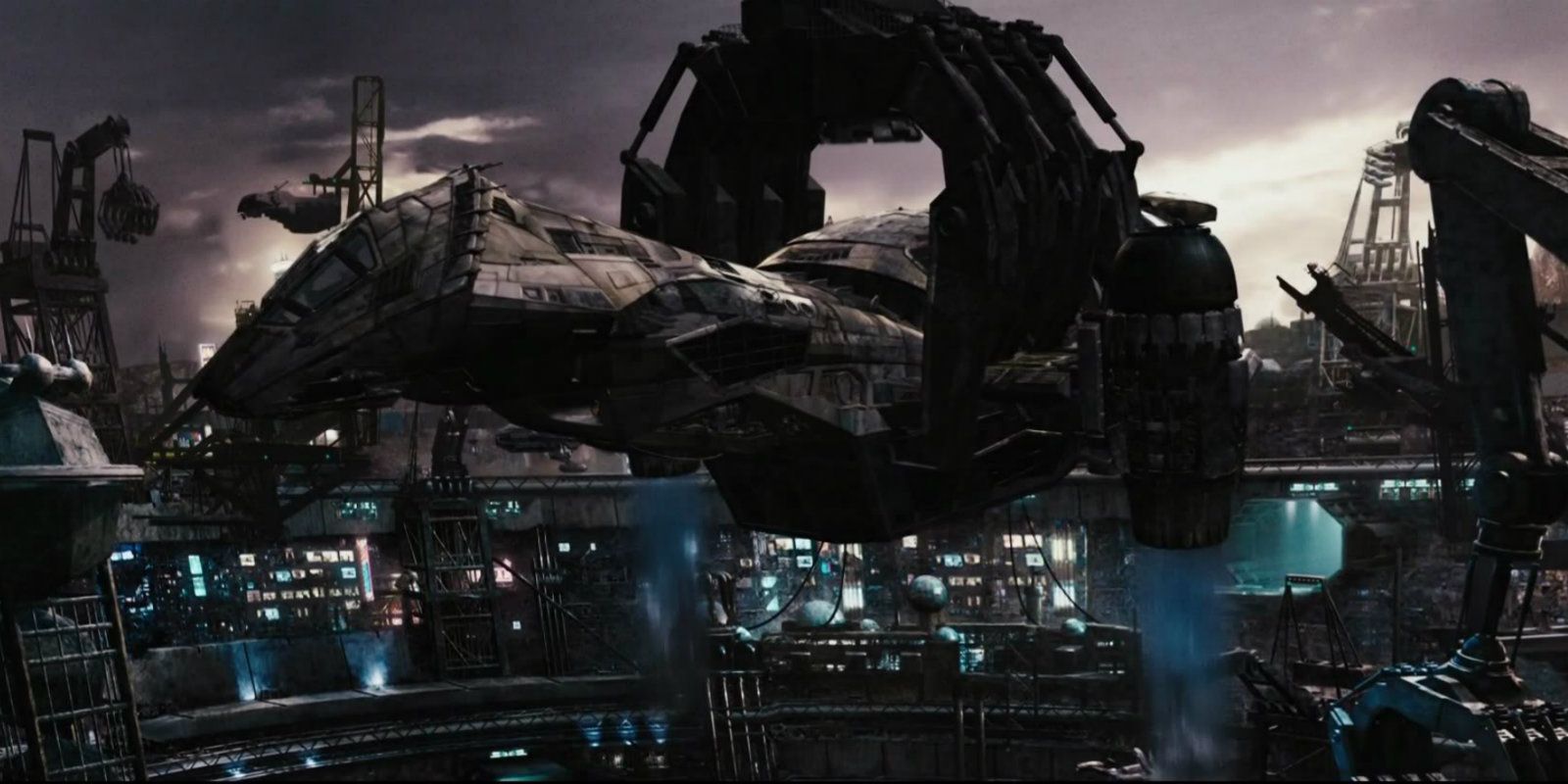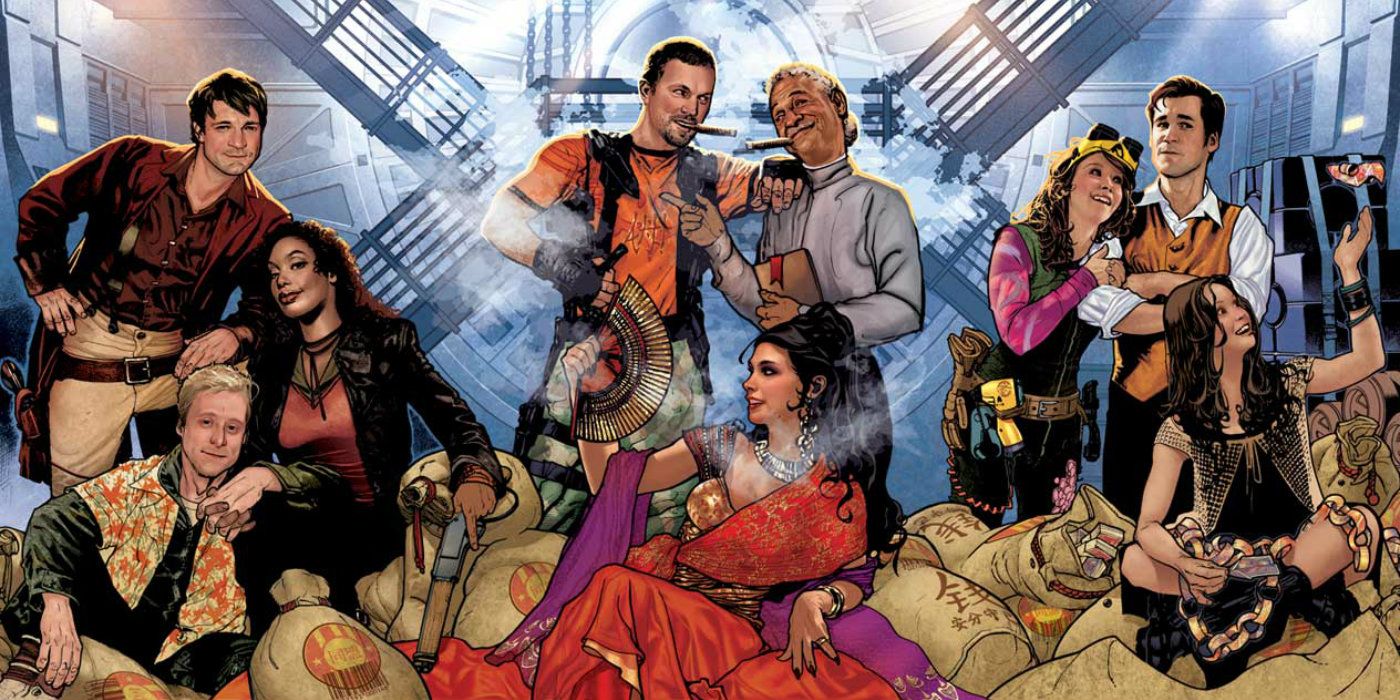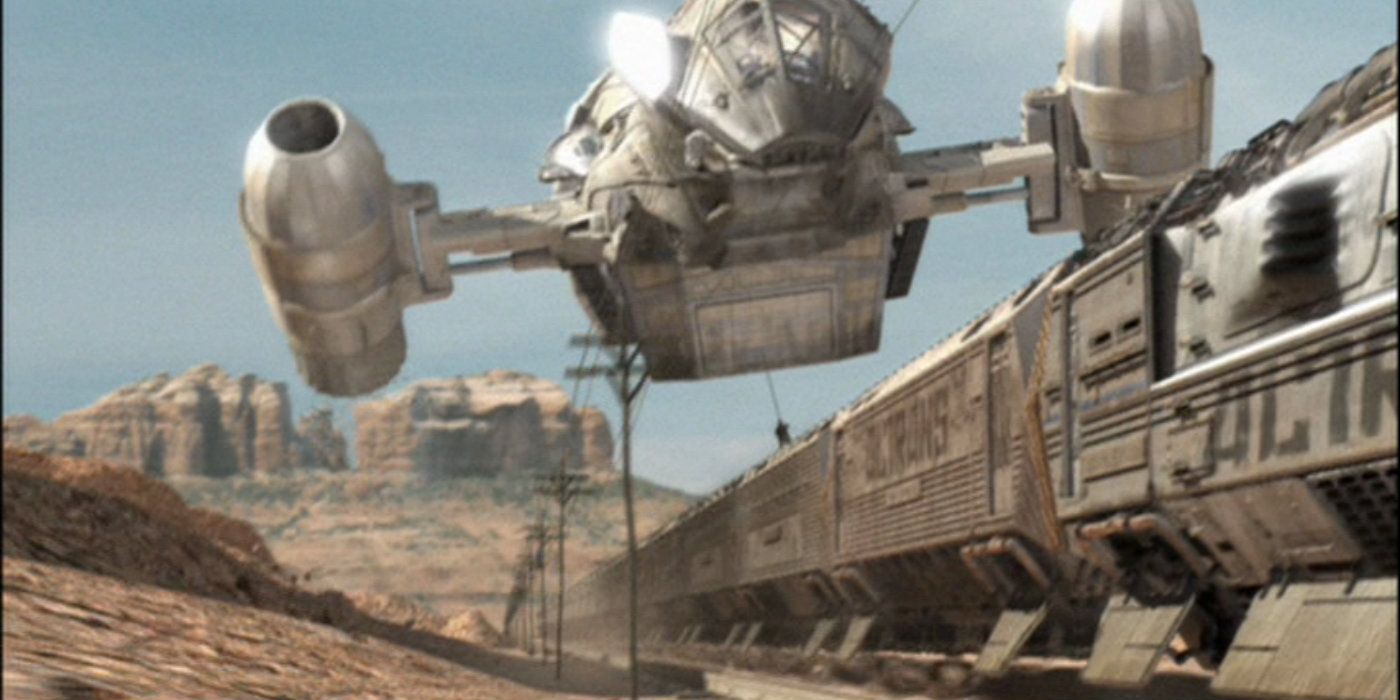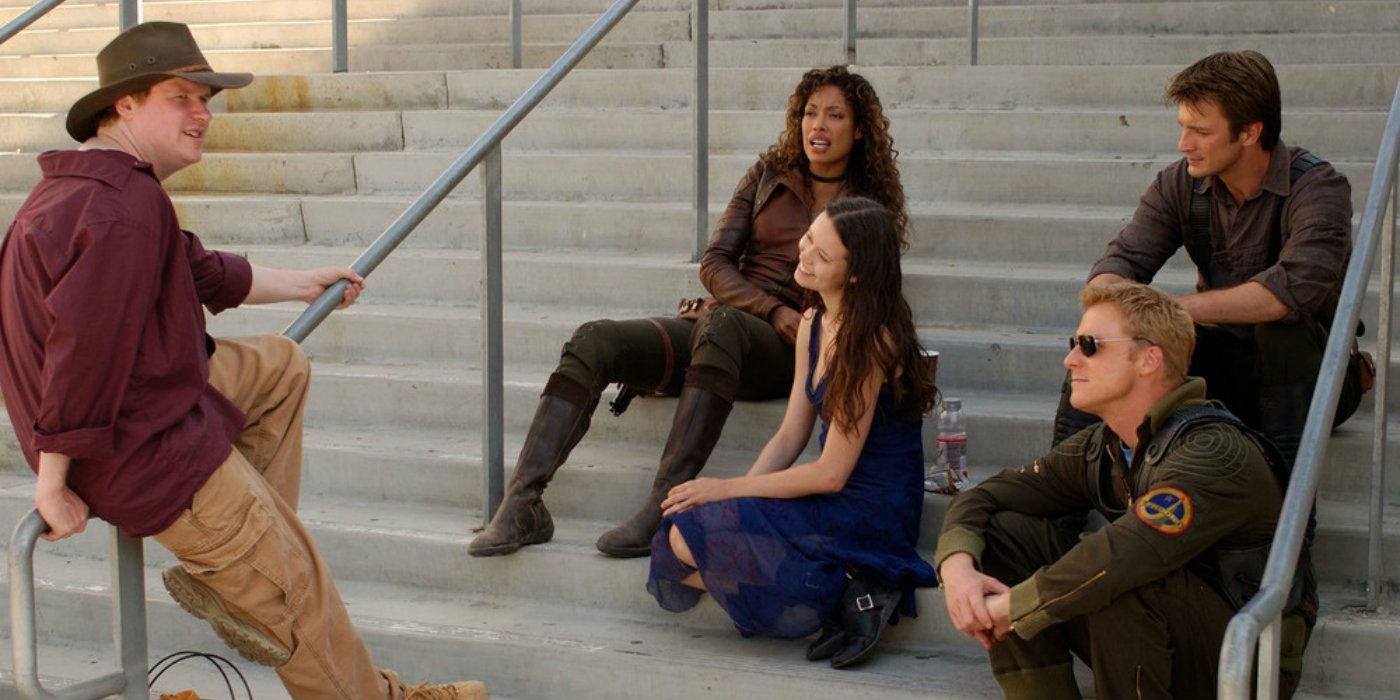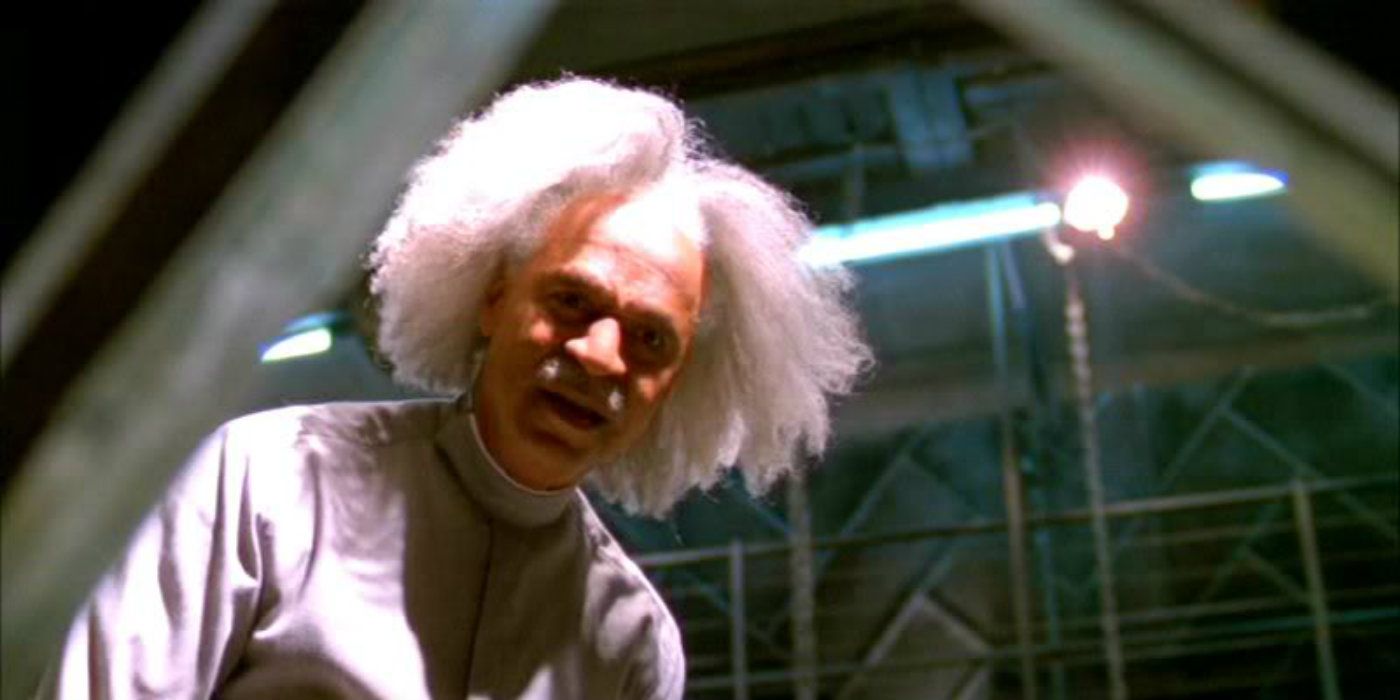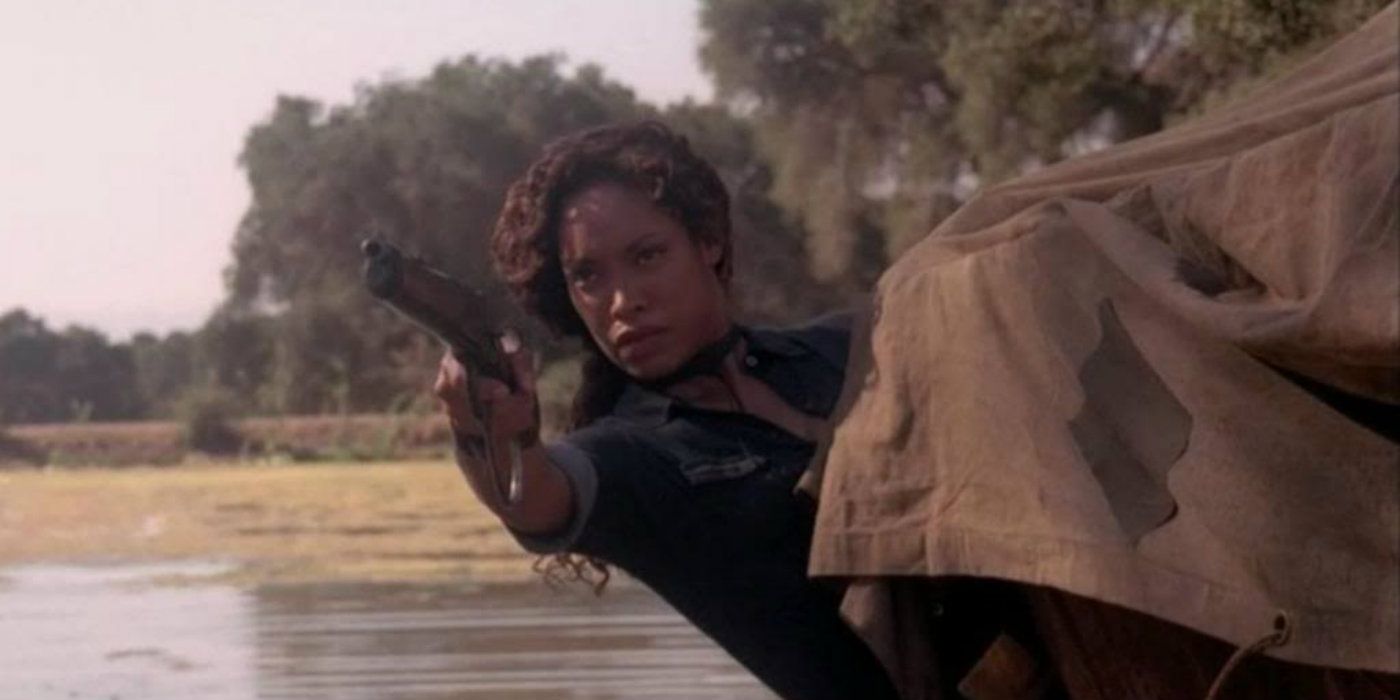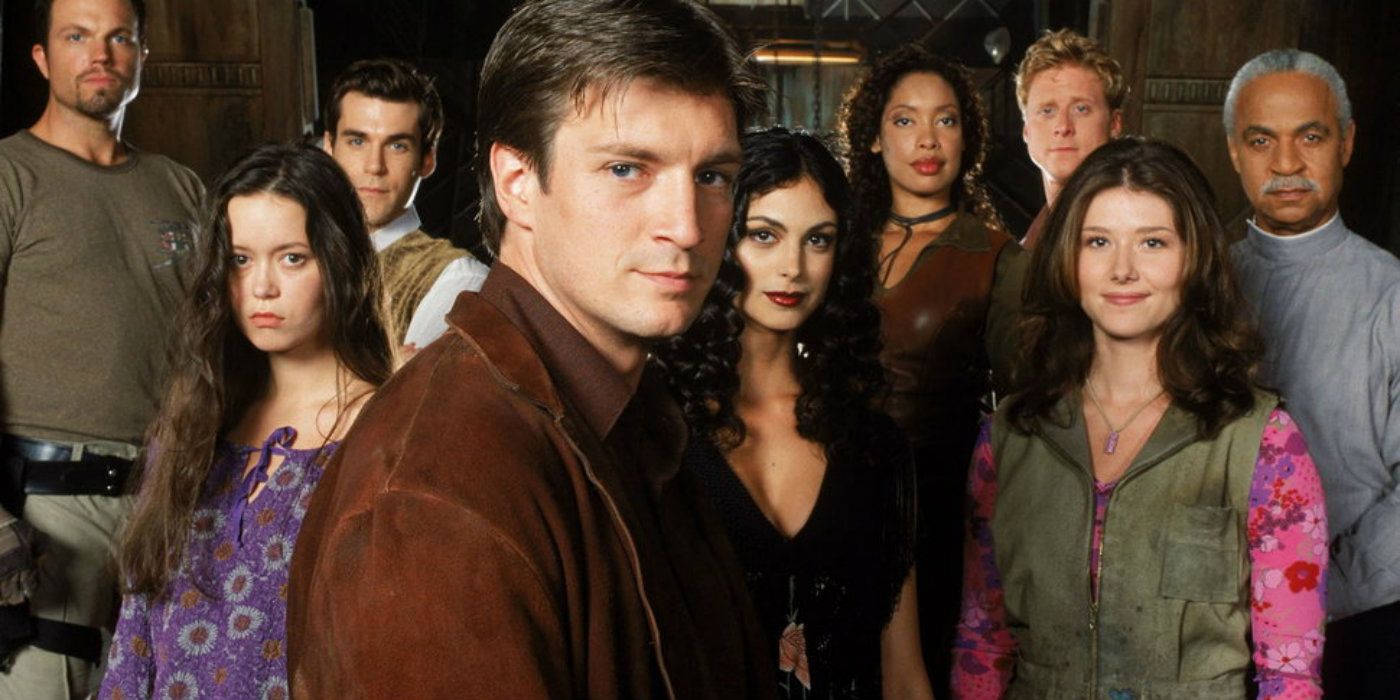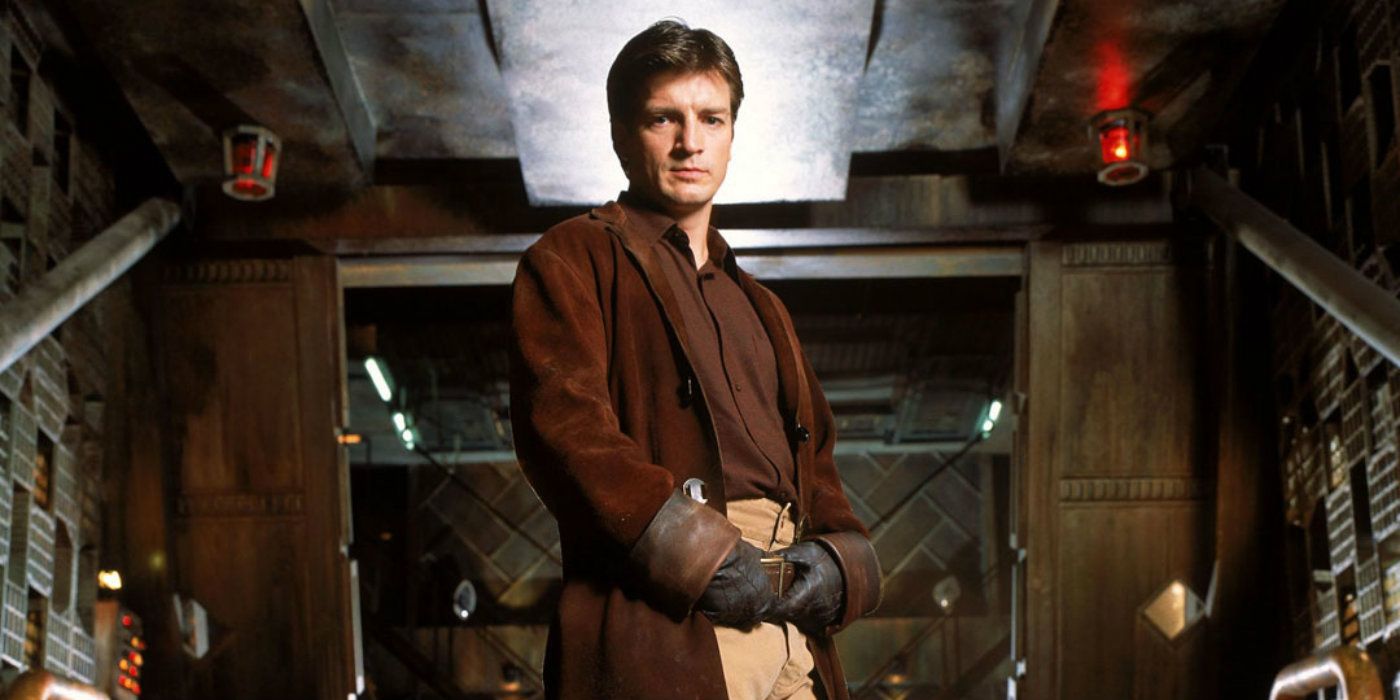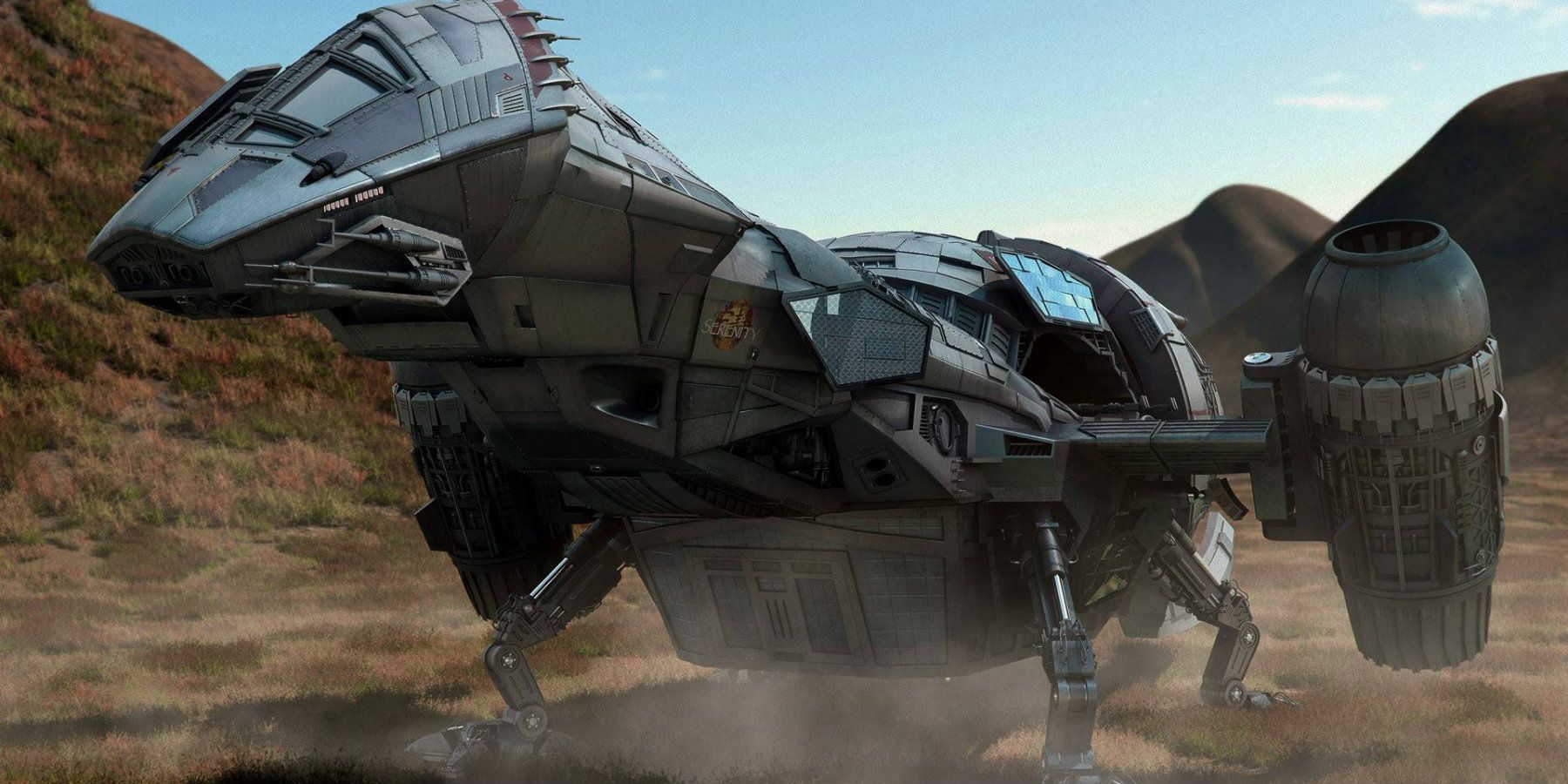Every once in a blue moon, a TV show comes along that manages to resonate with viewers so deeply, so completely that it gains a life far longer and fuller than it might otherwise have enjoyed. In 2002, that show was “Firefly,” a Joss Whedon creation that welded together everything fans loved about a rousing space opera with the down-home grittiness and can-do attitude of the Wild West. At last, space finally felt like a true frontier.
RELATED: Battlestar Galactica: The 15 Best BSG Episodes
Alas, the show’s network didn’t feel the same love for Whedon’s vision of the future. Fox cancelled the show after airing only 11 episodes on a fluid schedule that kept it off of viewers’ radar. Fans still love the Verse, though, and despite a feature film, loads of comics and a ton of merch, still clamor for the next chapter in Serenity’s journey through the Black. Here are 15 reasons why.
SPOILER ALERT! All kinds of “Serenity”-related spoilers ahead from the comics, movie and TV Show.
15 THE VERSE
After humanity fled Earth-That-Was, they began the long process of terraforming the moons and planets of a star cluster that took a full generation’s life cycle to reach. Once there, the old Terran superpowers of China and the United States flourished within the confines of the central planets, their cultures eventually coalescing into the Union of Allied Planets. On the Rim, the outer planets had no need of the new Alliance’s strictly regulated existence and set about fighting for the freedom to determine their own paths. The resulting Unification War shattered many worlds and set back the development of several others, in the most brutal conflict in human history.
The rebel Browncoats became outcasts, flouting authority while scraping out a meager existence far from Alliance strongholds. Despite this, the Verse is a colorful place that combines aspects of the dominant Western and Chinese cultures; where resourcefulness and loyalty are valued more highly than a good education and a successful career. This is especially true on the Rim, where technology and resources are often in short supply, meaning a person relies on their wits and often their guns to survive.
14 THE BALLAD OF SERENITY
Joss Whedon put a lot of thought into every aspect of “Firefly.” From the opening theme song to the show’s unique and diverse cultural backdrop, every facet of the production drove the creation of a believable fictional world that was equal parts science fiction and western. An integral part of luring viewers into the Verse, “Firefly’s” theme song was written by Whedon and performed by Sonny Rhodes, the self-styled Disciple of the Blues and immediately set the tone for each episode.
A simple, straight-forward ballad not without its own grounded lyricism, the song is inspired by the Battle of Serenity Valley, the bloodiest conflict of the Unification War, which also precipitated the final surrender of the Browncoats. Rhodes’ world-weary, gravelly vocals evoke the never-say-die attitude of the stubborn rebels, who still fight for freedom in the face of devastating loss by living their lives on the edges of civilization, thumbing their noses at the Alliance: “I don’t care, I’m still free. You can’t take the sky from me.”
13 COLORFUL LANGUAGE
Like “Firefly’s” theme song, an important aspect of the show’s success was its use of language. While the highly educated inhabitants of the Alliance’s central planets regularly use a polished fusion of English and Mandarin, solid diction and polite elocution are much rarer outside the Core. Along the Border, where a person’s survival isn’t open for debate, plain speaking is a valuable trait, so you won’t find much in the way of educated rhetoric.
That being said, Whedon’s use of Mandarin not only set “Firefly” apart from franchises like “Star Trek” and “Star Wars” but also provided another mode of expression for his protagonists. If that additional outlet most often came in the form of florid Chinese cursing, then so much the better. Whedon and his team of writers were able to float suspect dialogue past ignorant network censors, who typically had no idea just how colorful this extra avenue of expression could get. Although accurate, Chinese viewers maintain the Mandarin spoken on the show sounded garbled, while others sought out translations of their favorite lines, enjoying the more immersive viewing experience.
12 ROMANTIC TENSION
“Firefly” was a show with a little something for everyone, including oodles of romantic tension between the ship’s rascally crew. Arguably the most visible manifestation of romance on the ship was found in the relationship of married couple Zoe and Wash, who, for a time, provided a core of stability around which the other crewmembers’ more chaotic affairs revolved. Although their relationship came to an abrupt end when Wash was murdered by Reavers in “Serenity,” this marriage of opposites was one of the series’ most engaging romances.
The simmering romantic tension between Mal and Inara also bears mentioning, their on-again, off-again attraction fueling numerous memorable exchanges, while keeping viewers desperate to see them finally bump uglies, on the hook throughout the series. Complicated by Mal’s crude observations of Inara’s profession as a Companion, their relationship evolved over the course of the series and film, withholding payoff until Dark Horse Comics’ “Leaves on the Wind” limited series, where the turbulent couple is finally shown in a romantic relationship.
11 ENGAGING VILLAINS
In another departure from the conventional space opera formula, “Firefly” lacked an external big bad such as the Romulans or the Borg. Rather the main antagonist was the Alliance and even it was founded upon altruistic motives of providing prosperity and equality for all. However, like all human systems, the Alliance was flawed, tainted by greed and corruption and the misguided belief they could make people better.
This led to the creation of the Reavers, a race of mutated nomadic cannibals that came about as a result of clandestine experimentation on the hidden planet of Miranda. The most feared beings in the Verse, the Reavers are self-mutilating killers and rapists, who pillage the border planets without mercy or remorse. In between the Alliance and the Reavers, the Verse also boasts an eclectic collection of criminals, grifters and outcasts all looking to make a quick score. The most dangerous of these is undoubtedly Adelai Niska, the owner of the artificial satellite Skyplex and a notorious crime boss with an unhealthy passion for torture.
10 SOCIAL RELEVANCE
The Verse is a complicated quadrant of space with its own complex social structures and established societal norms. In some ways, it’s more forward-thinking than our present circumstances; in others it still has a ways to go. Companions, for example, are strictly regulated legal prostitutes, who actually enjoy a fair amount of political power and often act as diplomats. A Companion House on one’s planet or moon is a sign of cultured civilization and brings with it certain economic boons. Cultural diversity is also widespread, with different races living in relative harmony.
That isn’t to say prejudice is absent from the Verse. It simply occurs along socio-economic lines. The Alliance seeks a homogenized, sterile society, in which safety and prosperity are bought for with one’s individuality. Freedom is a fluid concept in “Firefly.” Those in the Core believe they live free simply because they are rich and protected by the Alliance, while those living on the Border believe they are rich because they live free of Alliance interference. At the end of the day, it is this economic and philosophic divide that spurs the likes of Mal and his crew to carve their own paths.
9 SUBSTANCE OVER SPECTACLE
Unlike many science fiction television shows and movies, the special effects in “Firefly” don’t overwhelm the story. Spectacle never comes before substance and special effects exist solely to support the plot. That isn’t to say they aren’t an important part of the series. In fact, in 2003, “Firefly” won the Emmy for Outstanding Special Visual Effects for a Series. However, a limited budget and uncertain broadcast schedule, not to mention the show’s setting and tone required a certain amount of restraint in the application of huge special effects sequences.
Following the “Star Wars” franchise’s cue, Whedon and company used technology to illustrate the difference between the Alliance and the outer planets. Just as the Rebels made due with whatever resources they could cobble together, so too the settlers of the border planets rely on innate ingenuity and low-tech solutions to get by. In contrast, the Alliance’s sleek powerful vessels and cutting edge science appear sterile and devoid of humanity. The show’s special effects play into the look and feel of the series, underscoring the crew’s constant struggle for survival on the fringes of a civilization that seemingly wants for nothing.
8 THE SPINOFFS
After its cancellation, “Firefly” achieved cult status fairly quickly. Its universal appeal rivals that of more established sci-fi franchises, even if its rabidly loyal fans are fewer in number. Thanks to the success of the DVD collection, there have been several ancillary spinoffs into other media, ranging from film to comic books. The feature film sequel “Serenity” was a rousing success and provided closure for fans craving the truth behind River’s mysterious abilities and provided an accessible port of call for new fans to board the titular Firefly class transport ship.
Dark Horse Comics has also published a cycle of one-shots and miniseries exploring the pasts of beloved characters like Wash and Shepherd Book and chronicling the present circumstances of Mal and his crew. There’s also an online role-playing game reportedly in the works (yet to be released, gorram it!) featuring voice work provided by several original cast members. While the future may be a little bleak in terms of movie or TV sequels, there are still many ways to visit the Verse.
7 GROUNDED ACTION & ADVENTURE
Whether they were defending a beleaguered whorehouse, lifting a valuable artifact from Earth-That-Was or performing a daring train heist, the crew of Serenity have never been strangers to a little action and adventure. Life among the border planets is never dull, especially for folks wanted by the Alliance. Staying one step ahead of the Feds requires daring, no little cunning and the intestinal fortitude to take jobs of a risky nature. For viewers, this translated into plenty of derring-do, as Mal somewhat recklessly led his crew into one dangerous job after another.
The action in “Firefly” is grounded in a way many other space operas aren’t, usually occurring on-planet rather among the stars in epic space battles. This allowed the production to keep its budget in check while still exploiting the inherent adventure of landing on new planetary outposts each week. Unlike the crew of the Enterprise, whose mission was to explore the galaxy, the misfits of Serenity welcomed the viewer on board, taking them on an adventure of exploration that felt more organic and down-to-earth.
6 TOP-NOTCH WRITING
Joss Whedon noted in the special features of the “Firefly” DVD collection that the threat of constant cancellation forced the show’s writers to write every scene like it was their last. And it shows. Although it was difficult to appreciate during its original airing in 2002, because Fox made the harebrained decision to broadcast the series’ episodes out of order, the storytelling is on point for all 14 installments. Plotting, pacing and dialogue worked in near-perfect synchronization as Whedon and his collaborators peeled back the skins of their characters and deepened our understanding of the Verse they lived in.
Growing out of Whedon’s pure vision of the Verse, scripts turned in by writers like Jane Epenson, Jose Molina, “The Tick” Creator Ben Edlund and showrunner Tim Minear struck a wonderful balance between character-driven action, succinct exposition and illuminating world-building. “The Train Job” is an excellent example of how the writers expanded our knowledge of both Mal’s motivations and the ongoing plight of the border planets. After successfully robbing a train of desperately needed medicine for Adelai Niska, Mal returns the purloined goods, when they realize just how sick the people they stole it from really are.
5 IT TICKLES THE FUNNY BONE
Part of “Firefly’s” popularity stems from its lack of pretension. This is a show that is at times laugh-out-loud funny, reveling in the interplay between its diverse characters and finding humor in the darkest corners of the human psyche. The show never takes itself too seriously but also thankfully lacks the annoying self-awareness that usually comes with self-deprecation. It would be easy to attribute much of the series’ comedy to Wash’s quirky diatribes or Jayne’s coarse utterances but “Firefly’s” sense of humor manifests from several sources.
Some of the funniest scenes revolve around River’s interactions with her crewmates, most notably Shepherd Book. Their classic ongoing parlay about the nature of faith is smart and still timely, while River’s encounter with the Shepherd’s unfettered locks is full of a strange whimsy. Equal parts crackling dialogue and undeniable chemistry between the entire cast, the humor in “Firefly” remains one of the show’s most endearing qualities.
4 STRONGEST WOMEN IN THE VERSE
Joss Whedon gained his reputation for writing strong female characters as the creator of “Buffy, the Vampire Slayer.” It’s a hallmark of his writing and clearly evident in all of his work, regardless of medium. “Firefly” boasts several extremely strong women in both major and minor roles. Zoe Washburne is a fierce warrior woman, whose career in the military ended with the defeat of the Browncoats. Just as capable as her captain, Zoe’s stalwart nature and fighting prowess never outweigh her femininity. In “Heart of Gold,” she refuses to let her dangerous lifestyle get in the way of motherhood as she argues for having a child with Wash.
Inara is another example of strength of a different kind. Disciplined, alluring and mysterious, Inara’s Companion training and clean record allows her to fill the role of ship’s ambassador in various points of call. More than a match for Mal intellectually, she has no problem knocking him down a peg or two, captain or not. Then there’s Kaylee, the ship’s mechanic, whose genius with machines is only outstripped by the love she feels for her family on Serenity.
3 FAMILY DYNAMIC
Much of “Firefly’s” charm can be traced back to its engaging cast. Each member of Serenity’s nine-person crew fulfills a specific role on the ship, whether it be of a practical nature, such as ship’s pilot, or more intangible, such as the sense of innocent whimsy evoked by River Tam’s presence. Even the gruff, rude, crude Jayne Cobb adds an important piece to Serenity’s family dynamic, playing the sketchy uncle with the itchy trigger finger with obvious relish. Inara is the nurturing mother figure, Zoe the fierce lioness, willing to do anything to protect the pride and Shepherd Book provides for his family’s spiritual needs—such as they are.
None of this would have been possible if it hadn’t been for some truly inspired casting. Whedon and company sought out actors with natural chemistry to fill the ranks of Serenity’s crew, eschewing big name stars for talented up-and-comers willing to set aside their egos and buy in to Whedon’s vision of the Verse. There is an obvious and undeniable personal connection between all of the cast members that allows for easy repartee and delightful improvised moments.
2 CAPTAIN MALCOLM REYNOLDS
It’s a time-honored tradition in science fiction that all great spaceships need a great captain. The Millennium Falcon had Han Solo; the Enterprise had James Kirk and Jean-Luc Picard. Serenity has Malcolm Reynolds. One part revolutionary and one part swashbuckling rogue, Mal was born on the doomed border planet Shadow, far from the Core and served as a Browncoat in the Unification War, fighting against the Alliance. Disillusioned by the Independent Planets’ surrender and haunted by his wartime experiences, not to mention the destruction of Shadow by Alliance bombers, Mal is a conflicted man torn by the need to do the right thing, while foraging on the fringes of a regimented society he fought against.
Fiercely loyal to his crew and ship, particularly Zoe Washburn, who served beside him throughout the war, Mal would lay down his life for any one of them. More than just a crew, they are his surrogate family and would make the same sacrifice for him. His call to arms in “Serenity,” upon uncovering proof of the Alliance’s complicity in the creation of the Reavers, was an instant classic of sci-fi, introducing the phrase, “I aim to misbehave” into geek vernacular.
1 SERENITY: NO PLACE THEY'D RATHER BE
Just as every great ship needs a great captain, so too does every great captain need a great ship. Serenity is that ship. More Millenium Falcon than she is U.S.S. Enterprise, Serenity is a 03-K64-Firefly class transport ship, commissioned in 2459. Mal picked her up for a song and immediately fell in love. Named after the disastrous Battle of Serenity Valley, in which the Browncoats unconditionally surrendered to the Alliance, Mal’s old boat has lived through her fair share of battles since coming into his possession. Constantly in need of repair and forced to perform in a variety of situations typically outside her wheelhouse, Serenity is arguably the most valuable (and beloved) member of Mal’s crew.
In “Out of Gas,” an explosion cripples Serenity, essentially scuttling her in deep space with failing life support. Through flashbacks, the episode shows just how important the ship is to her captain and crew, as Mal recalls how he first found her and the rest of his family. It becomes abundantly clear by episode’s end that without Serenity, Mal and the rest of his crew wouldn’t have grown into family much less have a place they could all call their home among the stars.
What’s your favorite thing in the Verse? Let us know in the Comments!

